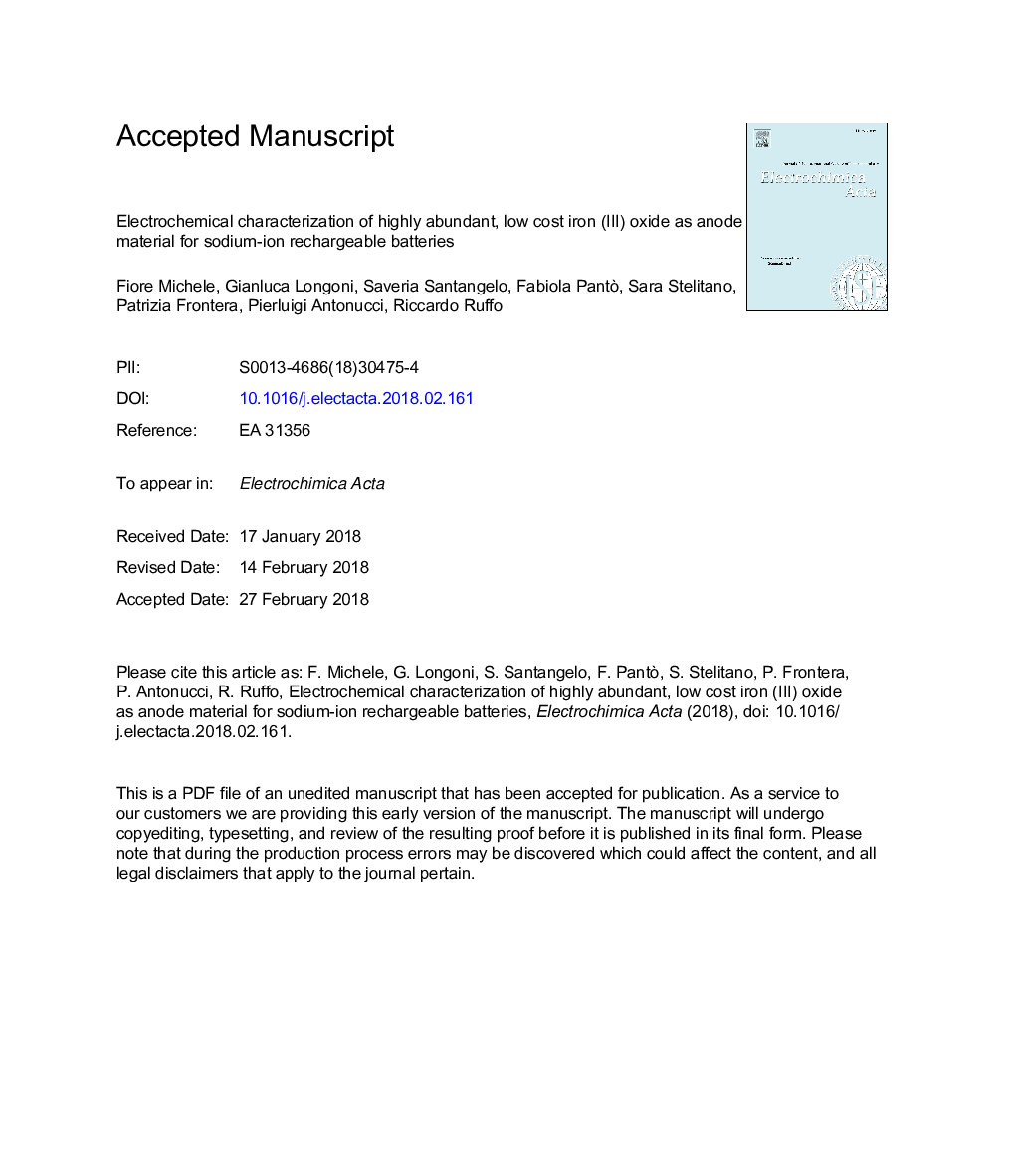| Article ID | Journal | Published Year | Pages | File Type |
|---|---|---|---|---|
| 6603632 | Electrochimica Acta | 2018 | 30 Pages |
Abstract
The development of sodium ion batteries as alternative technology to the lithium ion depends on the design of electrode based on cheap and high abundant elements. Iron oxides are potentially good candidates as negative electrode thanks to their high specific capacity, but they suffer from poor electronic transport properties and large volume change during sodiation/de-sodiation cycles. Stable performance in hematite or magnetite based electrodes requires the use of Fe/C composites made by expensive carbon precursors such as graphene oxides or carbon nanotubes. However, the limits of iron (III) oxide can also be tackled using a different approach by combining the advantages of the nanostructuring and the doping with an aliovalent element. In this work, we present for the first time the use of Si-doped Fe2O3 nanofibres obtained by an easy scalable process based on the electrospinning method. The silicon doping does not just improve the transport properties but induces also changes in the structure and morphology. The electrochemical results show that the Si-doped Fe2O3 fibres deliver an anodic capacity of 350â¯mAh·gâ1 at the average potential of 1.5â¯V vs. Na+/Na after 70 cycles, a result never achieved for iron oxide based electrode standard formulation.
Related Topics
Physical Sciences and Engineering
Chemical Engineering
Chemical Engineering (General)
Authors
Michele Fiore, Gianluca Longoni, Saveria Santangelo, Fabiola Pantò, Sara Stelitano, Patrizia Frontera, Pierluigi Antonucci, Riccardo Ruffo,
